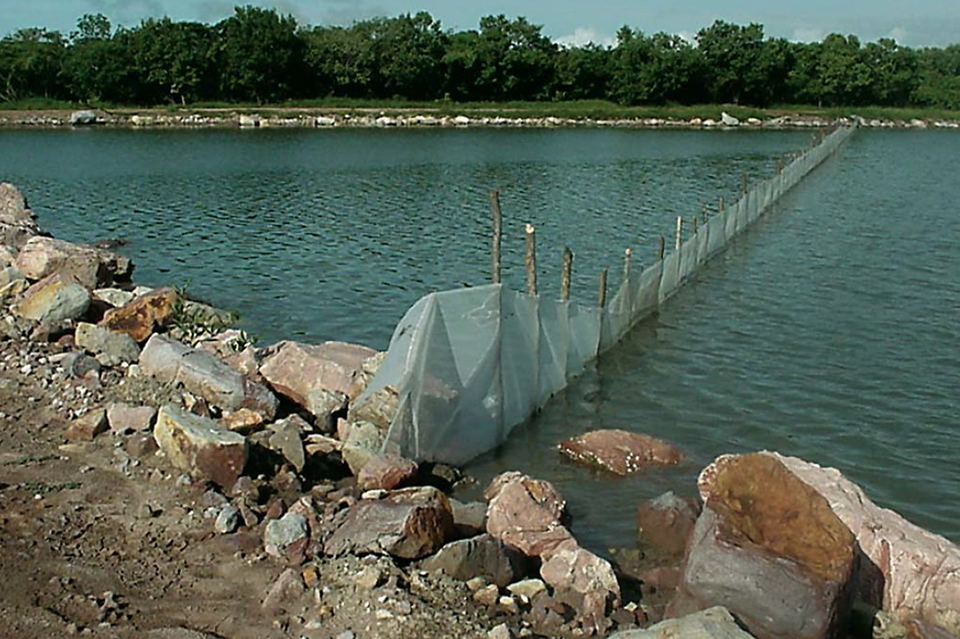
In 1992, the shrimp-farming industry in Panama reached a significant development, with 72 farms, around 9,000 ha of ponds, and production of 10,076 metric tons (MT) – an increase of about 94 percent from 1997 levels. Since March 1999, however, the industry has been severely affected by White Spot Syndrome Virus (WSSV). Severe losses and production problems resulting from the disease have stimulated the development of improved operational strategies, including those used to manage shrimp aquafeeds.
Feed management before WSSV
Before the arrival of WSSV in Panama, feeding generally began the day postlarvae (PL) were stocked into ponds, and followed a program based on the type of culture system (extensive, semi-intensive, or intensive). Normally, a feeding table was used, which started at around 20-24 percent of the biomass at a body weight of 1 gram, and decreased to 2.0 to 2.5 percent by harvest time at a mean weight of about 14 grams.
Crumbled feeds (30 to 35 percent protein) where typically used during the first 25 to 30 days after stocking, and then pelleted feeds (25 to 35 percent protein, 2.3-mm pellets) were used until harvest. In 1998, there were five feed plants producing formulated shrimp feeds in Panama. Aquafeeds were manufactured using local and imported ingredients, and medicated products were added at the request of farmers.
Feeds were typically distributed by manual broadcasting from boats, with pond staff trying to apply them in an even fashion. Most farms fed twice per day, with about one-third applied in the morning and two-thirds in the afternoon or evening. Feed rations were calculated weekly based on biomass estimated by sampling.
Current feed management
Feeds and feed management improved in the post-WSSV era, depending on the production system and pond intensity. There now are formulated feeds for extensive and semi-intensive systems (25, 30 and 35 percent protein), and feeds for intensive systems (25, 30, 35 and 40 percent protein). Ingredients vary, with more-expensive ones generally used in feeds for more-intensive systems.
The current objective is to produce larger shrimp faster. Some of the ingredient strategies include the addition of better attractants, like squid and crab meals or krill. Some feeds use immunostimulants and probiotics. Smaller, 1.6-mm pelleted feeds are commonly used during the first 30 days after stocking, replacing crumbled feeds.
Some farms are working under extensive stocking conditions (3-4 PL per square meter) with fertilization but without formulated feeds. With harvests of 1 to 1.5 animals per square meter, they hope to remain viable while working at a minimum cost. Other farms still working under “low” semi-intensive conditions (5 to 6 PL per square meter) are trying to increase shrimp growth by using feeds formulated for more intensive operations.
At farms with better results (45 to 70 percent survival), a finely milled feed is being used during an acclimation phase that lasts five to seven days. Shrimp are subsequently stocked in areas fenced by mesh in grow-out ponds for 20 to 30 days (Fig. 1) and fed special diets (1.6-mm pellets, 40 percent protein) that incorporate immunostimulant products.
Shrimp are then allowed out of the fenced areas to move into the grow-out ponds, where they are fed 2.3-mm pelleted diets with 25 to 30 percent protein. Immunostimulants are used on and off during grow-out, typically during two straight days after release from the fenced area, and sometimes twice per week at some farms.
Adjustments to rations are based on shrimp growth and tables. Feed is still applied mostly by manual broadcasting from boats (Fig. 2). Some of these farms are also adding molasses to ponds to improve carbon:nitrogen ratios. Other products and techniques are also being used, but survival rates at this time are only 10 to 15 percent.
Intensive, closed-system farms
Two intensive farms are currently operating in Panama, both with high levels of biosecurity. One project, within an established Agromarina farm, includes a 2.5-ha project with liners, a closed system using chlorinated water, and venturi and paddlewheel aeration systems. (See pages 9-11 in the February 2001 Advocate.) This is a two-phase system, with nursery ponds and grow-out ponds. Animals are transfered through a central gravity drain.
The feeding protocol is very similar to the one at Belize Aquaculture, Ltd. (see pages 53-58 in the February 2001 Advocate), using local and imported feeds (2.3-mm, 32 percent protein) with high-quality ingredients and immunostimulants. A grain-based feed (18 percent protein) is also used to promote heterotrophic bacterial communities. This farm is achieving survival rates near 80 percent.
The other intensive farm, Acuipaula, is a new project located in the Azuero Peninsula about three hours from Panama City. (See pages 55-56 in the December 2000 Advocate.) The final design of this project relied significantly on earlier work on zero-exchange systems at the Waddell Mariculture Center in South Carolina, USA, and Belize Aquaculture, Ltd., and on preliminary work carried out at the Camaco farm in Panama. Acuipaula has 20, 4,000-square-meter production ponds and uses paddlewheel aerators (20 horsepower per hectare).
A local feed (25 percent protein) is manually distributed from the pond levees during the entire cycle. Feeding rations are initially calculated using tables. During the first month after stocking, feed is applied twice per day. Starting at week five, daily rations are adjusted using feed trays. Three feed applications are used for days 30-70, and increased to five applications thereafter. This farm has reported survival rates averaging 74 percent and feed conversion ratios averaging 2.0.
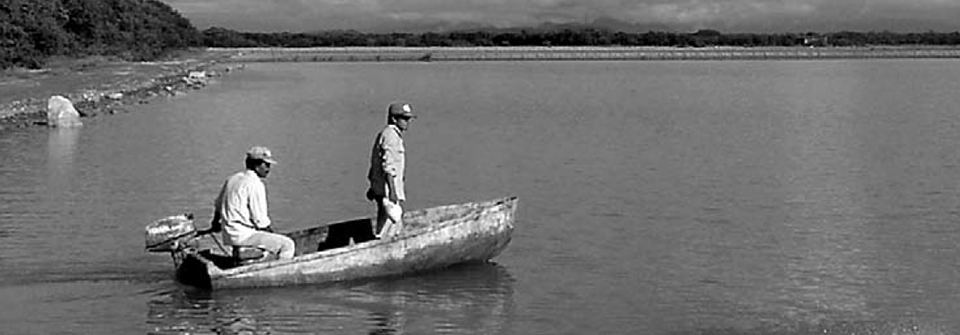
As in many other shrimp-farming countries, the arrival of WSSV has stimulated the development of improved feed management procedures that are geared toward more careful adjustment of feed application based on survival and growth of shrimp.
(Editor’s Note: This article was originally published in the April 2001 print edition of the Global Aquaculture Advocate.)
Now that you've reached the end of the article ...
… please consider supporting GSA’s mission to advance responsible seafood practices through education, advocacy and third-party assurances. The Advocate aims to document the evolution of responsible seafood practices and share the expansive knowledge of our vast network of contributors.
By becoming a Global Seafood Alliance member, you’re ensuring that all of the pre-competitive work we do through member benefits, resources and events can continue. Individual membership costs just $50 a year.
Not a GSA member? Join us.
Author
-
Hugo Perez Athanasiadis
Technical Advisor
Nutrición Animal S.A.
Panama, Republic of Panama
Tagged With
Related Posts
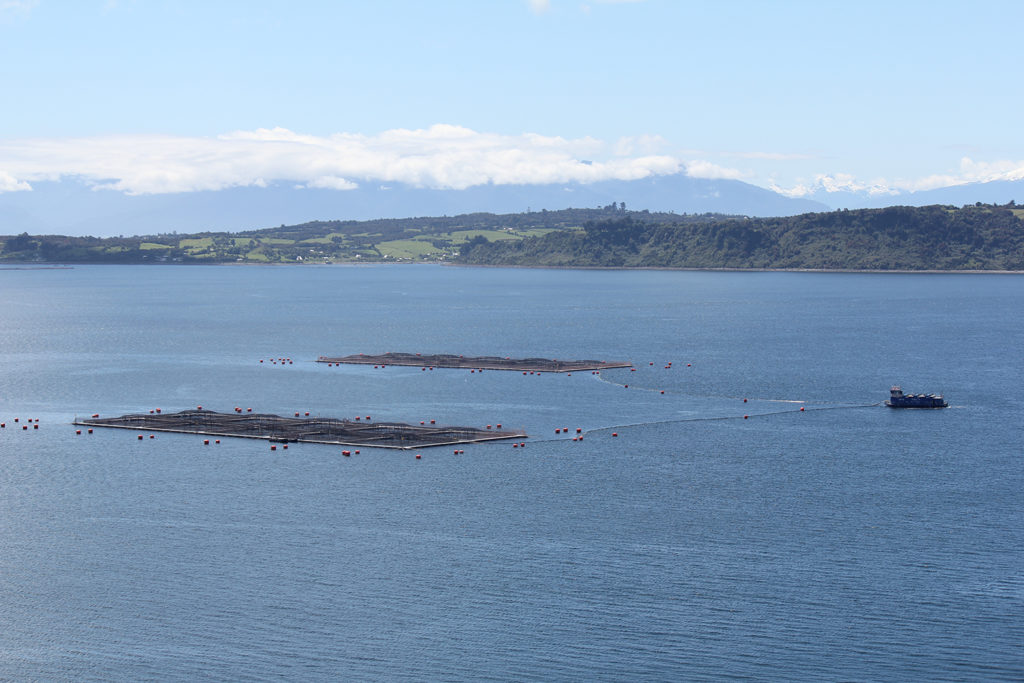
Intelligence
Global finfish production review and forecast: Nearly doubled in a decade
Farmed finfish production has more than doubled since 2005 to an expected 38 million metric tons in 2018; 2019 production is expected to remain at 38 million metric tons.
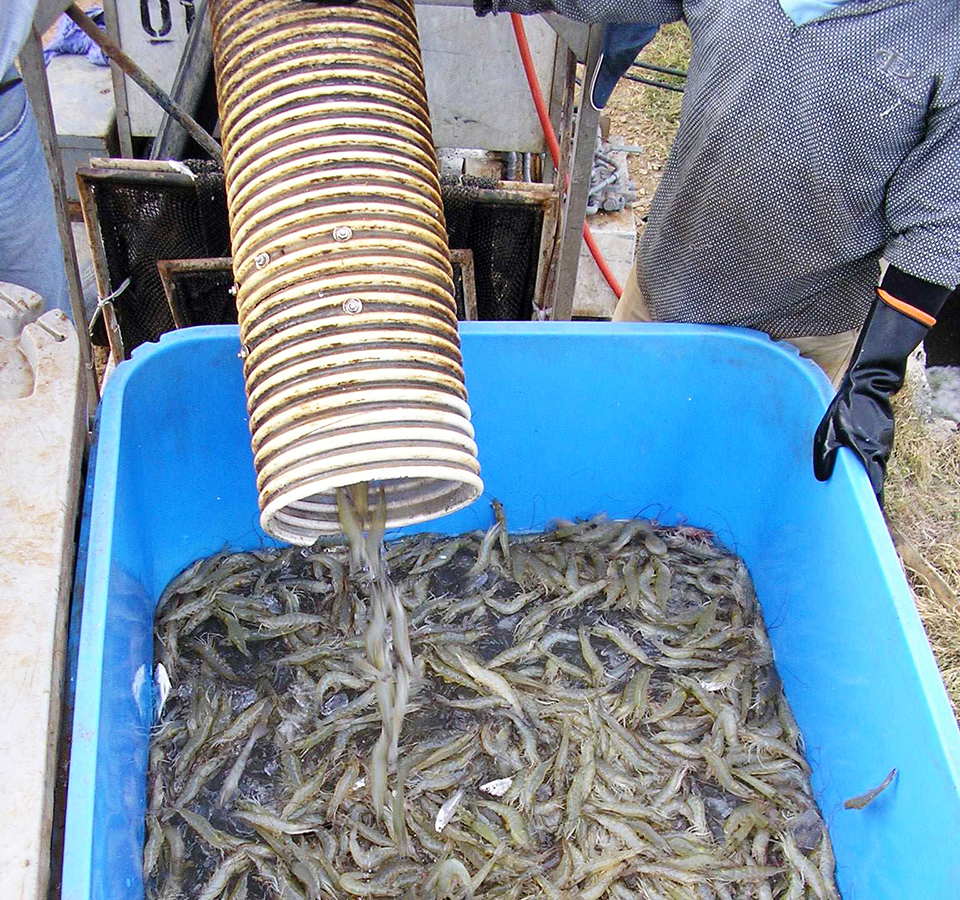
Health & Welfare
Panama demo shows botanical extracts improve shrimp productivity
Maintaining a favorable gut microflora in shrimp can help minimize the impacts of diseases and maximize digestive efficiency. Phytobiotic feed additives modulate microflora in shrimp toward a composition that favors beneficial bacteria and inhibits pathogenic microorganisms.
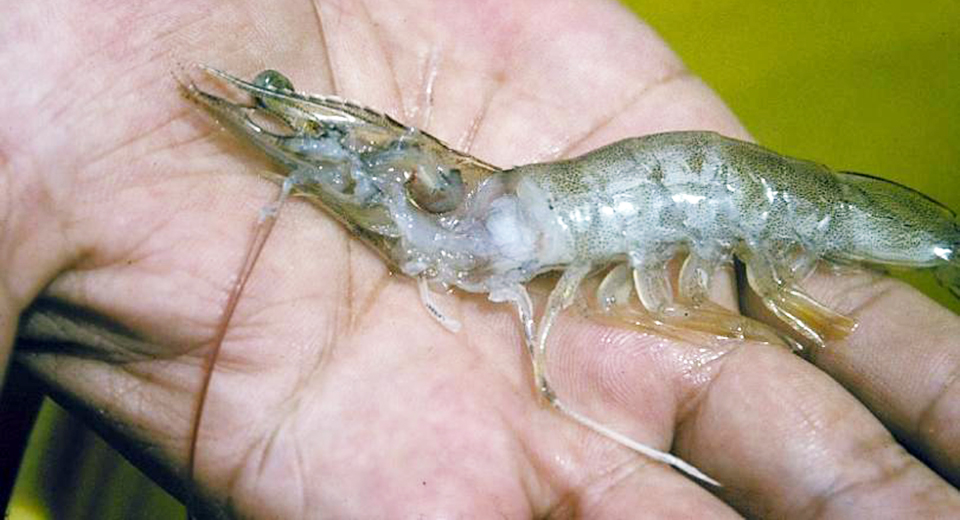
Health & Welfare
Necrotizing hepatopancreatitis: Diagnosis, distribution in shrimp
Necrotizing hepatopancreatitis has become one of the most important bacterial diseases affecting shrimp farming in the Americas.
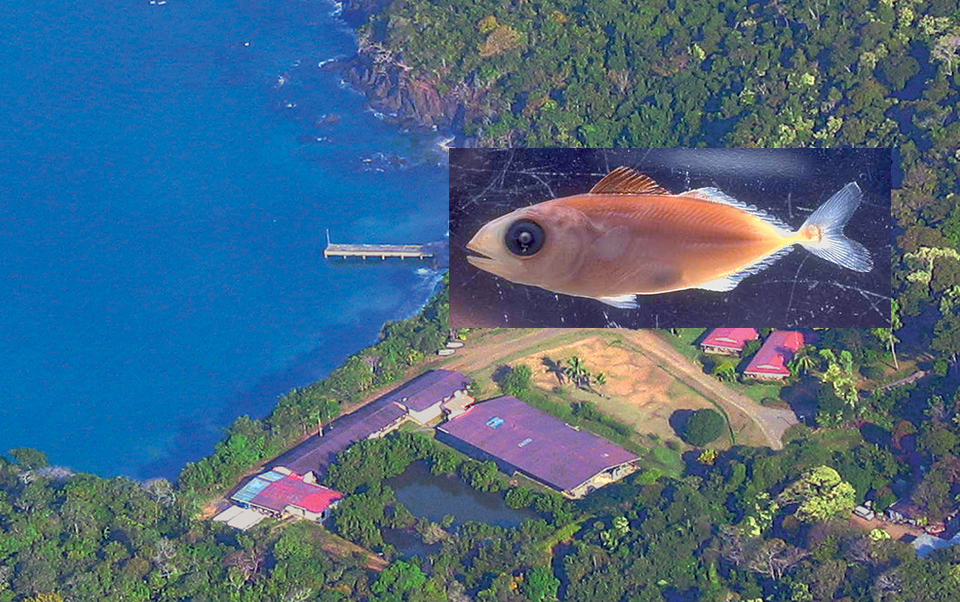
Health & Welfare
Achotines lab studies diets for larval, juvenile yellowfin tuna
Research at the Achotines Laboratory in Panama has been inconclusive involving probiotic treatments of first-feeding larval tuna and the rotifers they eat.


